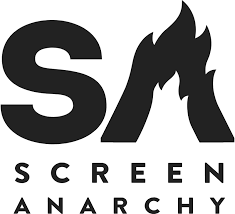Japanese provocateur and innovator Ujicha’s Violence Voyager is one hell of a trip into the mind of a madman. Filmed in the super obscure, and off-the-wall animation style known as gekimation, Violence Voyager is an unforgettable experience both in terms of the insanity happening on screen, and the fascintating technical construction of the film.
Gekimation is a style in which paper cutouts are filmed in real time moving through a scene in order to create the illusion of motion. This isn’t stop motion or even the South Park style of paper cutout animation, in gekimation, paper cutouts are filmed in motion creating in an incredibly bizarre visual experience that must require months of preparation and planning before the film actually gets to the production stage. What this allows in terms of creative output is the illusion of live action and the ability to capture difficult to replicate fluid motions like that of fire, liquids, and ooze without having to integrate much, if anything, in the way of digital FX.
However, like anything, gekimation is merely a tool, not a genre or descriptor of the film’s style. If the story of Violence Voyager was garbage, it would hardly register a blip. Thankfully, Ujicha has more than just technical chops, he is able to craft a completely insane story that utilizes his tools of choice in creating a film that is unlike anything you’ve ever seen.
Two 12-year-old boys, Bobby and his friend Akkun, strike out on a day trip to visit their friend who lives on the other side of a nearby mountain. Normally, this would be a long and arduous trek, but Akkun has recently discovered a little used shortcut that will make the trip much easier. After packing a day’s worth of supplies (and Bobby’s faithful kitty, Derrick), they start their adventure, only to be quickly sidetracked by the appearance of what appears to be a ghostly amusement park called Violence Voyager. Like any normal 12-year-old boys, the pair find the temptation irresistible and from there on, the day gets a lot more interesting.
They cross paths with the balding, bespectacled proprietor of the park, Koike, who tells them that the park is based on a story of aliens who’ve come to Earth to take over. The only way to protect the planet is by trekking through the park with protective wear and water guns filled with a specially concocted water-like fluid. Unable to resist their urge toward seemingly consequence-free violence, Bobby and Akkun take Koike up on his offer and begin the Violence Voyager campaign. It isn’t long before they discover something far more sinister and hideous about the fun park, and then the real adventure begins.
The park’s owner, Koike, is not a friendly guide, but rather a mad scientist intent on creating a new race of mutants, carved from the defiled bodies of young children. These mangled forms, disguised as aliens in a kind of armor, retain only the most basic of human characteristics on the outside, while still housing tortured human souls within.
Bobby and Akkun are confronted by other children who’d been previously lost in the park, and consequently join them in their quest to escape, though it looks like a lost cause. Some of them are caught by Koike, and their bodies are stripped and reconfigured to match his nefarious designs. Influences of Cronenbergian body horror play a huge part in the aesthetics of Violence Voyager, but it is still something completely unique, existing at the crossroads of The Fly and Shochiku-style horrors like Goke, Body Snatcher from Hell and Shintoho’s Jigoku.
Violence Voyager is an incredible feat of ingenuity, not only because of the painstaking manner in which it had to be constructed, but also the incredible intricacy of the world Ujicha has created. The gekimation style is largely innocuous as the film begins, simply a canvas on which to paint, but as the film moves through its disgusting paces, the live action animation allows for increasingly gruesome and bloody elements to engage the audience in a disgustingly visceral way.
The story is enthralling and complex, never letting the abstractness of the form overwhelm it. Ujicha’s creativity appears boundless, and there is never a stretch of more than a few minutes where the audience isn’t confronted by something wholly original that they’ve never seen before. The director mashes up influences from all over the science fiction and horror spectrums to create a fresh brew of insanity that the audience never sees coming., and it’s always a joy to be surprised these days, when it can feel like everything has already been done.

